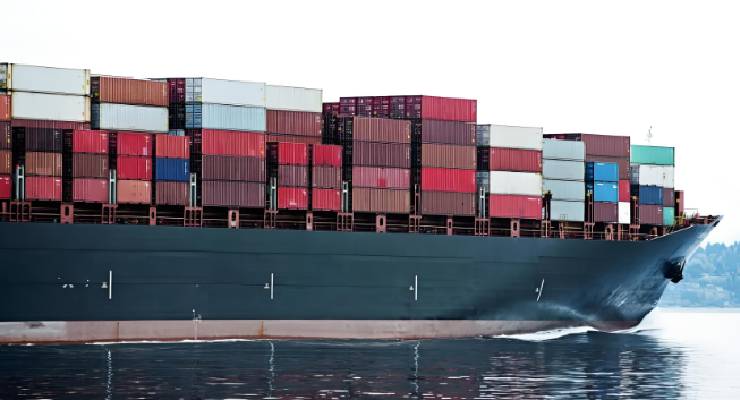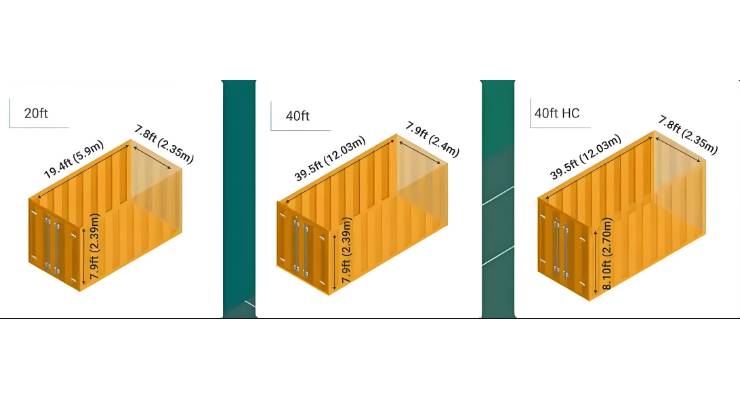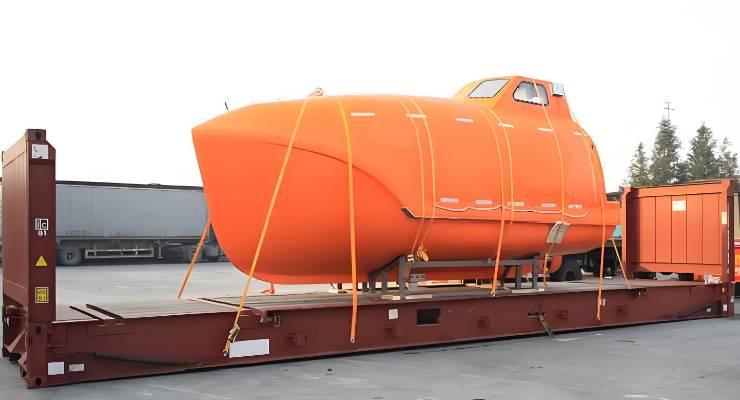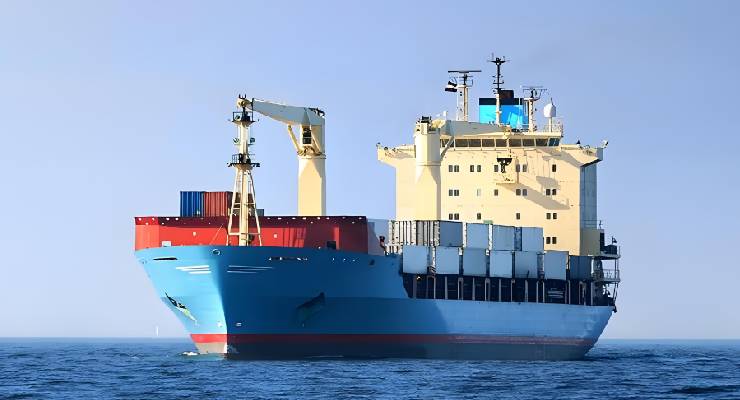
When transporting goods, there are some types of goods that exceed the permissible weight or size, so standard sea containers cannot be used.
Does your cargo exceed the usual dimensions of a 20 or 40 foot standard container? We will give you an overview of what you need to consider when transporting oversized cargo. Our experienced sea freight experts will be happy to provide you with individual advice and assistance to find the optimum solution for you.
Your advantages
Choosing a mode of transportation: We advise you on the ideal mode of transport for your oversized cargo.
Securing the cargo: We support you in properly securing your cargo and ensuring safe transport throughout the entire supply chain.
Transport to the port: We organise pick-up at the destination and drop-off at the port.
Cost overview: We check the total costs of your freight transport and pass them on to you transparently.
What does Out of Gauge Cargo (OOG) mean?
Out of gauge cargo (OOG) describes any cargo that cannot be loaded into six-sided shipping containers due to its size. All cargo that exceeds the dimensions of a 20 or 40 foot container is considered out of gauge cargo.
In concrete terms, this means that these loads exceed 12.05 metres in length, 2.33 metres in width and/or 2.59 metres in height.
The term often includes AIL (Abnormal Indivisible Load) loads. These cannot be broken down into smaller loads for transport without incurring unreasonable costs or risks. These unusually shaped cargoes require special heavy equipment to handle them for sea transport.
Read more about the dimensions of standard sea containers here —— Winsail Logistics.
How does the transport of OOG cargo work?
Oversized cargo creates special requirements for transport by sea freight. In order to carry out the shipment effectively and safely, a detailed analysis of all shipping characteristics must be carried out. Accurate and detailed information is essential for the freight forwarder when dealing with customised cargo.
The transport of OOG cargo can be roughly divided into three phases:
Information sharing: You provide us with all shipping details as early as possible. This includes, for example, the sensitivity of the load, access to the site and information on whether cranes are needed.
Comprehensive work plan: Receive a tailor-made OOG solution that sets the framework for OOG cargo handling.
Process support: We coordinate all parties involved and keep you informed about the project status throughout.
To successfully handle oversize cargoes, an established process and attention to detail are of enormous importance. Our experienced shipping experts take care of all details including documentation and permits.
The timely provision of comprehensive and detailed information in the first phase is particularly important for a smooth process when transporting oversized cargo.
What information is important for the transport of OOG cargo
In order to design a detailed plan for the transport of your cargo, it is advisable to provide accurate information as early as possible. Information on the origin of the goods, their destination, the type of goods and the duration of transport form the basis of the planning. You should also inform us of the handling capacity of the parties at the origin and destination, site requirements, access to the site, the sensitivity of the cargo and whether cranes are needed.

Technical diagrams
Together with an engineer, you prepare a technical description of the load. This will show the dimensions of the load and where the centre of gravity and lifting points are. Such diagrams help to determine the appropriate equipment and the necessary lashing means for lifting, transporting and securing the load. The technical diagrams are also used later by the ship or aircraft loadmaster when drawing up a loading plan.
Deadlines
Provide a date by which the OOG cargo must be delivered and also let us know when it is ready for transport. Provided the deadlines are communicated in advance, we can check them and take action to ensure they are met.
Handling OOG
Oversized cargo must be delivered and received directly at the pier with special transport equipment.
For the transport of particularly large or heavy goods, shippers often resort to flat-rack or open-top containers.
This type of container is characterised by a relatively thick steel floor, which can transport particularly heavy cargo.
Also popular for transporting oversized cargo are containers with two open walls and an open roof.
Like other container types, these open-top containers are available in two sizes: 20 and 40 feet.
Some oversized goods cannot be loaded into any type of container and are often transported directly on deck or in the ship’s hold.
Read more about the dimensions, volumes and maximum loads for the most common sea containers here.
Costs for the transport of goods outside the gauge (OOG)
The costs of transporting loads with oversize cargo are usually significantly higher.
The reason for this is that the bulky cargo takes up more space on a ship than standard containers.
When an OOG cargo is loaded on or below the deck of a cargo vessel, it usually leaves little space for adjacent twist locks to secure nearby containers. In addition, containers cannot be placed on top of the OOG cargo.
Shipping and transport companies charge additional fees to compensate for this wasted space. The wasted space is also referred to as "lost slots".

Examples of OOG freight
OOG cargo can be large automobiles such as luxury buses, car trailers, special works of art or mining equipment. Other examples of OOG cargo are construction machinery, aircraft parts, wind turbines and machinery for power generation.
Bulk cargo is also a type of cargo that is not transported in conventional containers.
1. Notes Of Open Top Container:
(1) Special cabinets are generally limited to 4 meters in width and height for ultra-wide and ultra-high goods.Once more than 4 meters, the choice of miscellaneous transport
(2) When making an inquiry and quotation, we should pay attention to whether the size of the goods is within or outside the specification
(3) Open top does not mean that the transportation is really “open”. The goods of open top container have the same waterproof and protection requirements as ordinary containers, so the top must be covered with waterproof devices after loading the goods.
(4) Cover the tarpaulin well during the operation of open-top cabinet transportation, grasp the highway width limit and high standard, arrange the trailer according to the specific situation of the goods, and calculate the trailer cost according to the situation of the goods.
(5) Open top container transportation binding, the first is to understand the specific situation of the goods, shape and weight, decide which open top container size needs to be used, the key is the balance of the center of gravity;The main material is steel wire, joint, binding belt, small wood pad.Binding point requires a good connection with the whole, strong force, the distance between binding points to be short;If there is no binding point, the overall binding shall be carried out according to the size of the goods.Had better take a picture after binding is finished, keep the picture of open top ark after binding with standby, if the person that professional guides binding is not present, also convenient transmission this opens top ark picture to seek binding guidance, see whether bind correctly.When making an inquiry, we need to ask who is responsible for binding and who will bear the cost.
2. Notes Of Flat Board Container:
(1) Good binding/supporting/fixing of flat cabinet and trailer transportation, pay attention to balanced placement and maintain stable center of gravity.According to the needs of the goods themselves, waterproof and moisture-proof measures must be taken with good strength of the packaging, in order to avoid the packaging of goods in transit rupture.
(2) The main part of the goods is fixed on the cabinet with steel cables.
(3) The front and rear of the goods must be effectively strengthened. In addition to adequate steel rope reinforcement, chocking should be installed to prevent the goods from moving back and forth.
(4) Bulk cargoes must be properly packed, preferably in case with no packing or vacancy.Flat board cabinet binding, binding steel cables and wooden boxes between the need for pad.
(5) Provide cargo loading drawing/loading plan before loading.Whether the goods can be shipped not only depends on whether to do a good job of flat board cabinet binding reinforcement, trailer arrangement, but also to take into account the actual operation of each dock and route arrangement, whether the port equipment can undertake the goods.
3. What Materials Should OOG Ask The Customer To Provide For The Inquiry?
OOG special cabinet inquiry and general cabinet inquiry are very different, according to the specific size, size and weight of goods to determine the price.
When making an inquiry, please remember to provide the size of the special container after the packaging of the goods, the weight of the goods and the delivery date. If the size of the goods is too large and the weight is uneven, please also provide pictures so that the shipping company can determine whether the goods can be transported.
-
 A Comprehensive Guide to Refrigerated ContainersJun 17,2025
A Comprehensive Guide to Refrigerated ContainersJun 17,2025 -
 Guide to 20ft & 40ft Shipping Container Dimensions for Global LogisticsJun 17,2025
Guide to 20ft & 40ft Shipping Container Dimensions for Global LogisticsJun 17,2025 -
 How to track shipments sent from ChinaMay 13,2025
How to track shipments sent from ChinaMay 13,2025 -
 Guide to Importing and Shipping Cars from China to UAEMay 13,2025
Guide to Importing and Shipping Cars from China to UAEMay 13,2025 -
 Guide to Importing and Shipping Camping Gear from ChinaMay 07,2025
Guide to Importing and Shipping Camping Gear from ChinaMay 07,2025 -
 Shipping from China to YemenMay 06,2025
Shipping from China to YemenMay 06,2025

